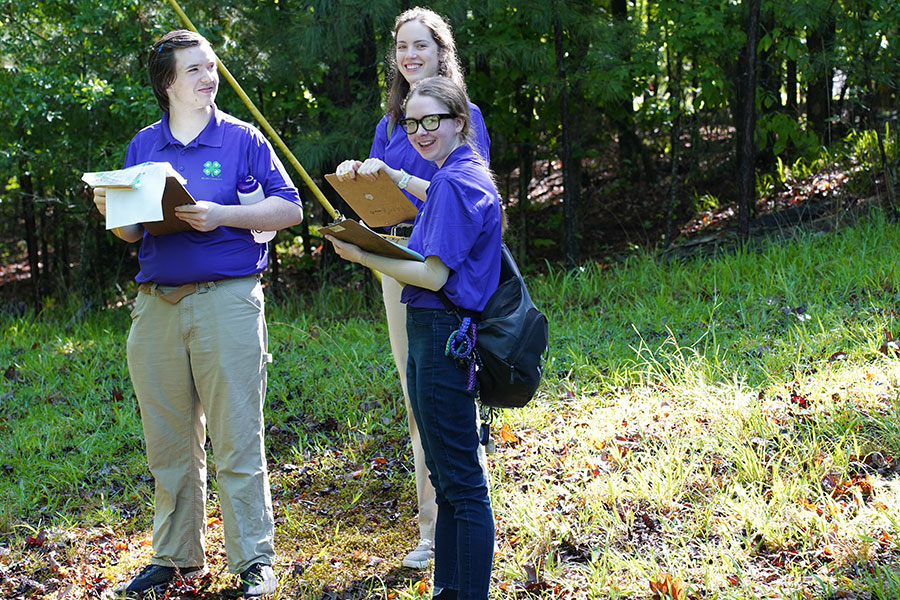A recent University of Georgia study showed the importance of balanced growth strategies for preserving the financial health of local governments.
The study was conducted by the UGA College of Agricultural and Environmental Sciences and the Warnell School of Forest Resources. Economists did detailed analyses of the tax revenues from four Georgia counties (Appling, Cherokee, Dooly and Jones) and the cost of public services delivered to different types of development in the 1999 fiscal year.
Costs Higher Than Revenues
The study found that commercial and industrial development, farms and forest lands brought in more in tax revenues than they cost in public services. But that's not true of residential development. In all four counties, revenues from housing developments fell far short of supporting the cost of services the new housing demanded.
The study looked at the costs and revenues associated with different land uses. It found that for every $1 in revenue generated by residential development in Cherokee County, $2.23 was required in public service expenditures, including schools, fire and police protection, infrastructure and road maintenance.
The service cost per $1 in revenue was $2.26 in Appling County, $2.07 in Dooly County and $1.23 in Jones County.
Local Governments Lost Money
So local governments lost money on housing developments. But they brought in more revenue than they spent for services from commercial and industrial development and from farm and forest lands.
|
|
|||
| Land Use | |||
| County | Residential | Comm./Industrial | Farm/Forestland |
| Appling | $2.26 | $0.17 | $0.36 |
| Cherokee | 1.60 | 0.12 | 0.20 |
| Dooly | 2.07 | 0.50 | 0.27 |
| Jones | 1.24 | 0.65 | 0.35 |
Farms, forests and other open lands bring in less revenue per acre than housing development. But they require far less expenditure, due to their modest demand for public infrastructure and services.
The net fiscal impact, comparing total revenues to total expenditures, gives a true picture of what different land uses cost the community.
"The reason for these differences is fairly simple," says Gerry Cohn, director of the Southeast Region for the American Farmland Trust. "Cows don't go to school. And tractors don't dial 911. Farms don't ask for much from their counties, while new housing developments spread out across the countryside require a great deal of public funds for new infrastructure and services."
Schools are an important part of the cost burden of housing developments. But even without school costs, these developments create a net fiscal loss for local governments.
In Cherokee County, with school costs excluded, the service cost per dollar of revenue is $1.44 for residential development, 31 cents for commercial/industrial and 52 cents for farm and forest land.
The study is a snapshot of current revenues and expenses on a land-use basis and averages across all land in the county in a single year.
"This is important," said Jeffrey Dorfman, a UGA professor of agricultural and applied economics who helped direct the study, "because it means that results are based on old and new development."
"In fact," he said, "new residential development almost surely underpays by more than these figures, due to the higher cost of infrastructure and the lower density of development today, compared to 20 or 30 years ago."
Dorfman said counties should approve new development carefully and with full information.
"Approved development should be steered to those geographic areas that minimize the cost of servicing the development," he said. "Conservation subdivisions and higher-density development (for the same number of units) also help lessen the negative economic impact of converting farmland into houses."
Cherokee County is one of the fastest-developing counties in the nation. The study there highlights the fiscal issues surrounding conversion of farm and forest lands to developed uses. Most people see the downside of growth as the traffic and environmental quality issues. They don't realize that unbalanced growth is almost always economically unsustainable, too.
For Cherokee County to maintain its fiscal viability, housing development must be balanced with commercial/industrial development. New houses do increase the tax base, but not nearly as fast as they increase the expenditures of the local government and school system.
When farmland is turned into a commercial site, green space and a historical part of the county is lost. But at least there is an economic gain to the community. When a farm or forest is converted to a subdivision, the community loses both green space and money.
Pioneered by the American Farmland Trust in 1986, cost-of-community-service studies have been performed in more than 80 communities nationwide. Every community is different. But COCS studies have consistently shown that farm and forest landowners pay more in taxes than they get in services. Residential land uses, though, are a net drain on local government finances.
The goal of this COCS study is to provide information to help citizens and local officials recognize clearly the fiscal impacts their land use and planning decisions.
"COCS studies don't predict future costs or the impacts of future growth. But they're valuable in dispelling three myths that are commonly heard about land use," Cohn said.
"First, sprawling residential development will likely end up costing taxpayers more to provide public services," he said. "Second, this shows that farmland, even when being taxed at its conservation-use value, is paying more than its fair share.
"Finally," he said, "farm and forest land, besides providing green space, wildlife habitat and local economic activity, provides substantial fiscal benefits. It's not just open land waiting to be developed."






